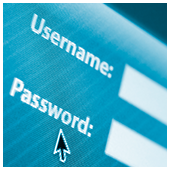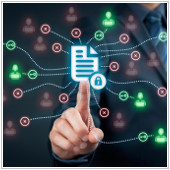When it comes to protecting yourself and your business online, the type of authentication you use for logins, whether for business or for personal use, is vitally important. While many people understand that secure logins are crucial, the differences between the various security measures may be lost on many people. Before you give up on […]
 When it comes to protecting yourself and your business online, the type of authentication you use for logins, whether for business or for personal use, is vitally important. While many people understand that secure logins are crucial, the differences between the various security measures may be lost on many people. Before you give up on understanding the variances between two-factor and two-step authentication, read this article to learn more so you have a fuller understanding of your cyber security.
When it comes to protecting yourself and your business online, the type of authentication you use for logins, whether for business or for personal use, is vitally important. While many people understand that secure logins are crucial, the differences between the various security measures may be lost on many people. Before you give up on understanding the variances between two-factor and two-step authentication, read this article to learn more so you have a fuller understanding of your cyber security.
If you are seeking out a way to improve your business's cyber security, both for your business itself as well as for your customers, you are likely looking at your authentication process. Two-step and two-factor authentication are two of the most commonly used options in cyber security. And in current cyber security, many businesses use the terms two-step and two-factor authentication interchangeably.
There are, however, subtle differences between the two. A two-step authentication process requires a single-factor login (such as a memorized password or biometric reading) as well as another of the same type of login that is essentially sent to the user. For example, you may have a memorized password for your first step and then receive a one-time-use code on your cell phone as the second step.
Two-step authentication does function to add an extra step in the authentication process, making it more secure than a single-step authentication (i.e. just the password). However, if a person or business is hacked, it will do only a little to stop hackers from getting a hold of whatever they are looking for.
On the other hand, there is two-factor authentication (sometimes referred to as multi-factor authentication), which is significantly more secure. This type of authentication requires two different types of information to authenticate. For example, it could be a combination of a fingerprint or retinal scan as well as a password or passcode. Because the types of information are different, it would require a hacker a great deal more effort to obtain both forms of authentication.
In essence, every two-factor authentication is a two-step authentication process, but the opposite is not true. With this information in mind, you can be certain that you are using the right type of authentication in your business to keep your business and customer information as secure as possible.
Your network needs the best security technology has to offer. What type of authentication that results in is just one of hundreds of choices that must be made to achieve that end. To take the stress out of securing and protecting your network, call us today for all the help you could ever ask for.

 The technology of crime is evolving, and criminals get smarter every day. But when technology proves too difficult to exploit, criminals resort to manipulating information from their targets via social engineering. This burgeoning field allows criminals to trick people into disclosing sensitive information such as passwords and bank information. If you’re worried about the ability of your employees to avoid scams such as these, we have a few quick tips for you.
The technology of crime is evolving, and criminals get smarter every day. But when technology proves too difficult to exploit, criminals resort to manipulating information from their targets via social engineering. This burgeoning field allows criminals to trick people into disclosing sensitive information such as passwords and bank information. If you’re worried about the ability of your employees to avoid scams such as these, we have a few quick tips for you. Everyone hates jargon. It’s ostracizing and off-putting, but somehow we just keep creating more and more of it. For those who have adopted an “if you can’t beat ‘em, join ‘em” philosophy, we have just the list for you. Let’s take a look at some of the most relevant cybersecurity terms making the rounds today.
Everyone hates jargon. It’s ostracizing and off-putting, but somehow we just keep creating more and more of it. For those who have adopted an “if you can’t beat ‘em, join ‘em” philosophy, we have just the list for you. Let’s take a look at some of the most relevant cybersecurity terms making the rounds today.
 Until now, virtualization hadn’t been targeted by cyber attackers with the same vigor as other small- and medium-sized business IT solutions. Whether it was because of the inherent security of virtualization or because of the relatively narrow scope of its adoption, this is no longer the case. VMware, one of the leading virtualization software vendors, released a vital patch to a number of their products to combat unauthorized users attempting to gain undeserved privileges. Keep reading for an update on how it affects you.
Until now, virtualization hadn’t been targeted by cyber attackers with the same vigor as other small- and medium-sized business IT solutions. Whether it was because of the inherent security of virtualization or because of the relatively narrow scope of its adoption, this is no longer the case. VMware, one of the leading virtualization software vendors, released a vital patch to a number of their products to combat unauthorized users attempting to gain undeserved privileges. Keep reading for an update on how it affects you.